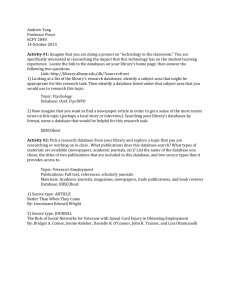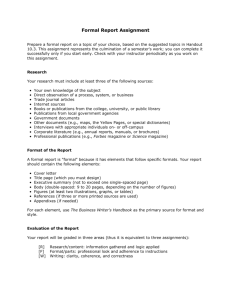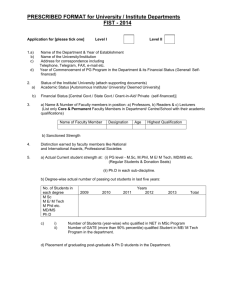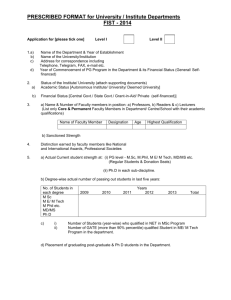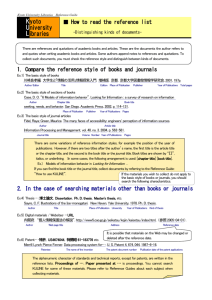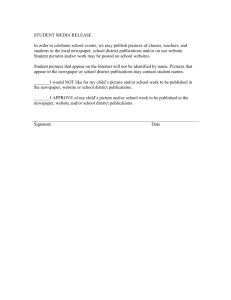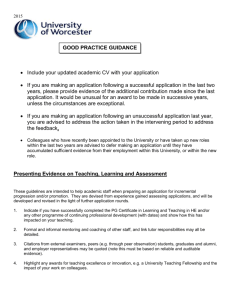CS&E Promotion Procedures
advertisement
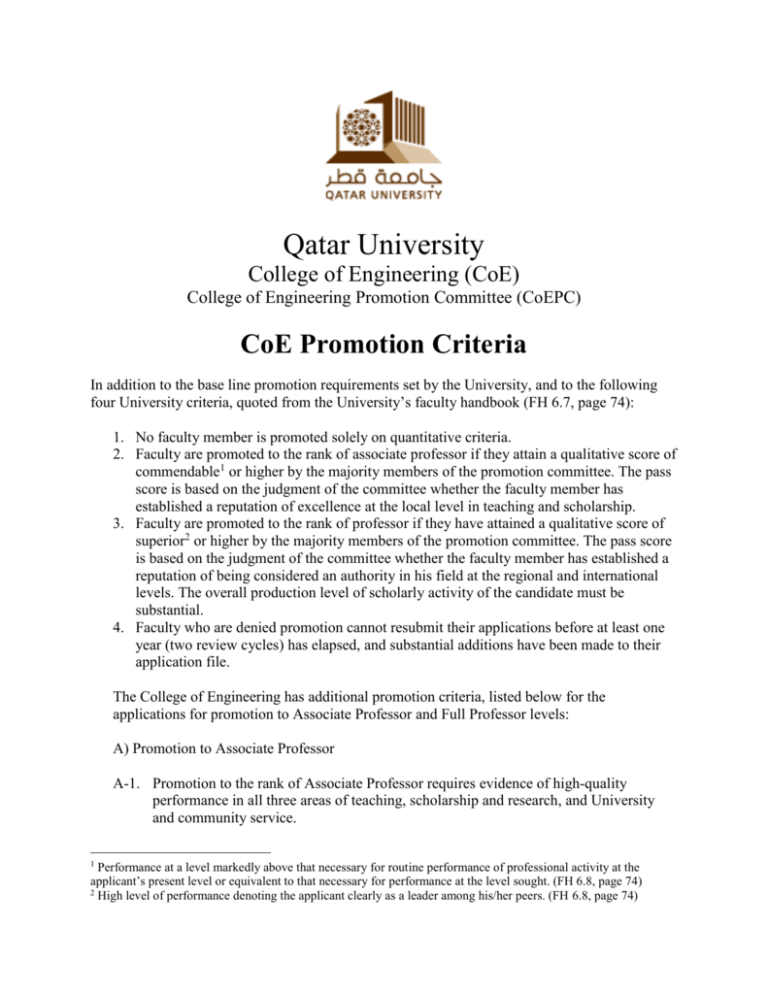
Qatar University College of Engineering (CoE) College of Engineering Promotion Committee (CoEPC) CoE Promotion Criteria In addition to the base line promotion requirements set by the University, and to the following four University criteria, quoted from the University’s faculty handbook (FH 6.7, page 74): 1. No faculty member is promoted solely on quantitative criteria. 2. Faculty are promoted to the rank of associate professor if they attain a qualitative score of commendable1 or higher by the majority members of the promotion committee. The pass score is based on the judgment of the committee whether the faculty member has established a reputation of excellence at the local level in teaching and scholarship. 3. Faculty are promoted to the rank of professor if they have attained a qualitative score of superior2 or higher by the majority members of the promotion committee. The pass score is based on the judgment of the committee whether the faculty member has established a reputation of being considered an authority in his field at the regional and international levels. The overall production level of scholarly activity of the candidate must be substantial. 4. Faculty who are denied promotion cannot resubmit their applications before at least one year (two review cycles) has elapsed, and substantial additions have been made to their application file. The College of Engineering has additional promotion criteria, listed below for the applications for promotion to Associate Professor and Full Professor levels: A) Promotion to Associate Professor A-1. Promotion to the rank of Associate Professor requires evidence of high-quality performance in all three areas of teaching, scholarship and research, and University and community service. 1 Performance at a level markedly above that necessary for routine performance of professional activity at the applicant’s present level or equivalent to that necessary for performance at the level sought. (FH 6.8, page 74) 2 High level of performance denoting the applicant clearly as a leader among his/her peers. (FH 6.8, page 74) A-2. Papers that are considered toward the promotion evaluation must be published in refereed international journals. Other publications will be considered as an important element in the evaluation, but will not be counted toward the minimum number of publications required. A-3. A maximum of one Book or one Book Chapter or one Patent may be counted toward the minimum number of publications required, and therefore may substitute one of the required papers. The Book or Book Chapter must be research-oriented. The Patent must be filed in a reputable Patent Office. An edited book without a research contribution of the editor is not acceptable. A-4. With reference to co-authored publications, a Senior Author is typically the first author, the first non-student or non-postdoc author, or the corresponding author. In all cases, the senior author should sign the Contribution in Collaborative research form as required by the University. The information provided in this form states the seniority of the authors. A-5. The success in getting funding for research projects as PI or Co-PI and/or in generating publications from such projects is an important element in the promotion evaluation process. A-6. Sustained and productive scholarly activity will be demonstrated mainly through quality published work. The quality of the published work will be evaluated by such measures as: a. The impact factor of the scientific journals. b. Frequency of citations of the published work. c. The journal acceptance rate of articles. d. The journal review process (how rigorous?). e. The reputation and history of the scientific journal (as recognized by experts in the area). The CoEPC strongly encourages candidates to provide evidence and documentations to support the measures listed in criterion A-6 above. B) Promotion to Full Professor: B-1. Promotion to the rank of full professor is reserved for those applicants whose contributions are considered outstanding and are expected to have international recognition in their research area(s). This may be demonstrated by activities such as reviewing papers for reputable journals, serving on the editorial boards of reputable journals, publishing papers that are highly cited, and participating in organizing international conferences, etc. B-2. Papers that are considered toward the promotion evaluation must be published in refereed international journals. Other publications will be considered as an important element in the evaluation, but will not be counted toward the minimum number of publications required. B-3. A maximum of one Patent filed in a reputable Patent Office may be counted toward the minimum number of publications required, and therefore may substitute one of the required papers. B-4. With reference to co-authored publications, a Senior Author is typically the first author, the first non-student or non-postdoc author, or the corresponding author. In all cases, the senior author should sign the Contribution in Collaborative research form as required by the University. The information provided in this form states the seniority of the authors. B-5. The success in getting funding for research projects as PI and/or in generating publications from such projects is an important element in the promotion evaluation process. B-6. Sustained and productive scholarly activity will be demonstrated mainly through quality published work. The quality of the published work will be evaluated by such measures as: a. The impact factor of the scientific journals. b. Frequency of citations of the published work. c. The journal acceptance rate of articles. d. The journal review process (how rigorous?). e. The reputation and history of the scientific journal (as recognized by experts in the area). The CoEPC encourages candidates to provide evidence and documentations to support the measures listed in criterion B-6 above.
